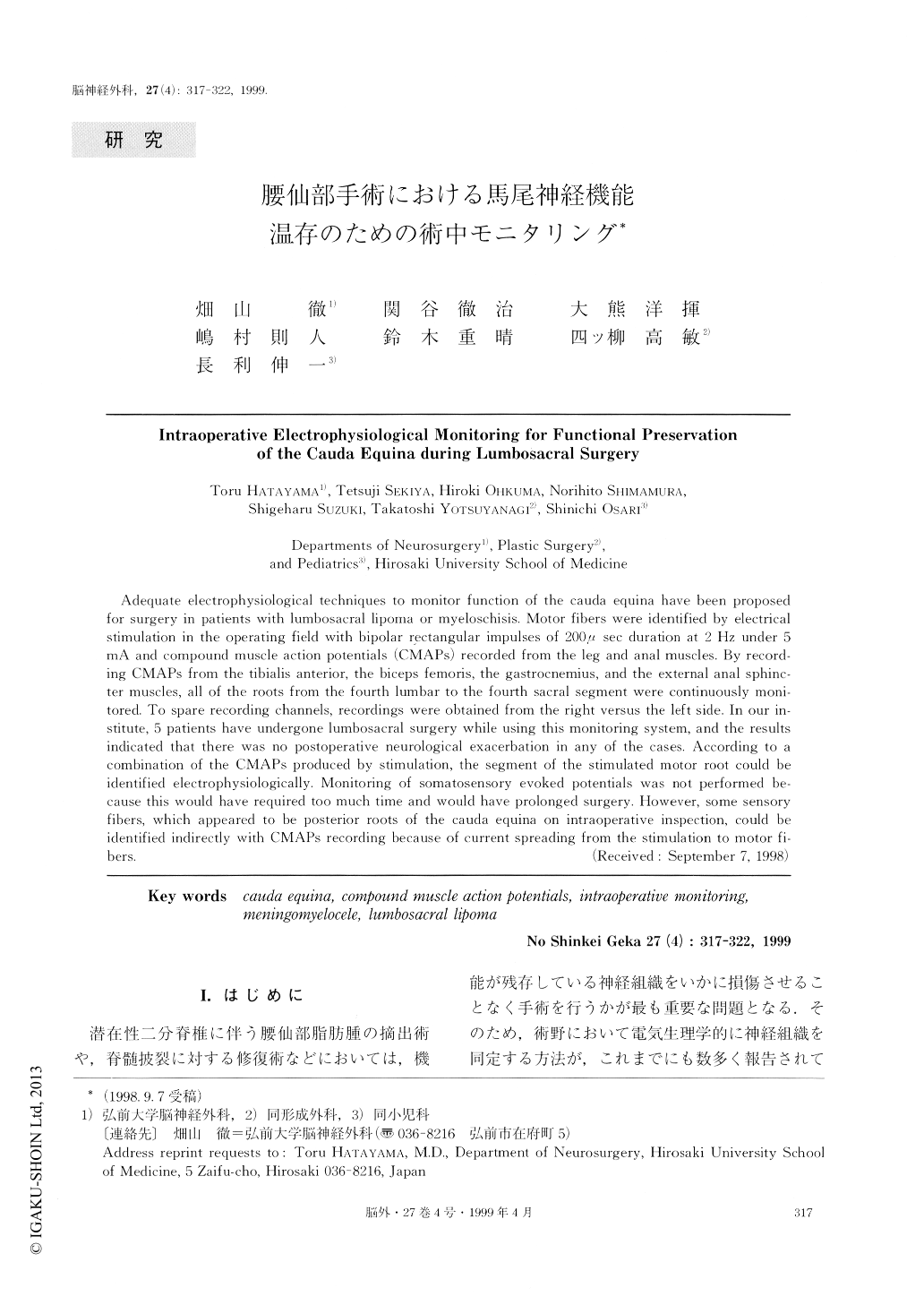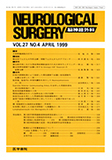Japanese
English
- 有料閲覧
- Abstract 文献概要
- 1ページ目 Look Inside
I.はじめに
潜在性二分脊椎に伴う腰仙部脂肪腫の摘出術や,脊髄披裂に対する修復術などにおいては,機能が残存している神経組織をいかに損傷させることなく手術を行うかが最も重要な問題となる.そのため,術野において電気生理学的に神経組織を同定する方法が,これまでにも数多く報告されてきた1,2,4-8,10).しかし,多くの方法を併用した場合,確かにモニタリングの精度は向上するが,それに伴って操作が煩雑となるため,必要かつ十分な情報を得るべくモニタリング方法を取捨選択する必要性が生じてくる.また,脊髄披裂に際しては,感染予防のため緊急手術となることが少なくないため1),実施にあたっての即応性も求められる.そこでわれわれは,下肢の運動筋ならびに肛門括約筋からの誘発筋電図記録を中心に行い,腰仙部手術において実用的となるモニタリング方法について検討した.
Adequate electrophysiological techniques to monitor function of the cauda equina have been proposedfor surgery in patients with lumbosacral lipoma or myeloschisis. Motor fibers were identified by electricalstimulation in the operating field with bipolar rectangular impulses of 200,a sec duration at 2 Hz under 5mA and compound muscle action potentials (CMAPs) recorded from the leg and anal muscles. By record-ing CMAPs from the tibialis anterior, the biceps femoris, the gastrocnemius, and the external anal sphinc-ter muscles, all of the roots from the fourth lumbar to the fourth sacral segment were continuously moni-tored. To spare recording channels, recordings were obtained from the right versus the left side. In our in-stitute, 5 patients have undergone lumbosacral surgery while using this monitoring system, and the resultsindicated that there was no postoperative neurological exacerbation in any of the cases. According to acombination of the CMAPs produced by stimulation, the segment of the stimulated motor root could beidentified electrophysiologically. Monitoring of somatosensory evoked potentials was not performed be-cause this would have required too much time and would have prolonged surgery. However, some sensoryfibers, which appeared to be posterior roots of the cauda equina on intraoperative inspection, could beidentified indirectly with CMAPs recording because of current spreading from the stimulation to motor fi-bers.

Copyright © 1999, Igaku-Shoin Ltd. All rights reserved.


